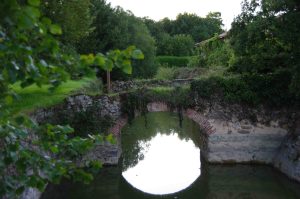 It’s dark, it’s cold, and just a few feet away are hundreds upon hundreds of sandhill cranes, all of which have flown thousands of miles, to land at what amounts to a pinpoint, geographically speaking. Sandhill cranes gather in huge numbers, the largest bird migration in the Americas, riding the winds of the Central Flyway from Mexico, Texas, and New Mexico. Their destination? A 75-mile chunk of the Platte River between Kearny and Grand Island, a tiny landing strip given its context smack in the middle of the North American continent. The Platte is a braided river, with slim strands of shimmering shallow water crossing and weaving around an ever-shifting pattern of narrow sandbars. Gathered on these sandbars to roost at night, the cranes are protected from predators. Standing in densely-packed flocks, their collective body heat helps mitigate the icy cold of both air and water. This is their staging area, where the cranes spend about three weeks resting and replenishing their stores of fat in order to fly north to the nesting grounds in northern Canada, Alaska, and Siberia.
It’s dark, it’s cold, and just a few feet away are hundreds upon hundreds of sandhill cranes, all of which have flown thousands of miles, to land at what amounts to a pinpoint, geographically speaking. Sandhill cranes gather in huge numbers, the largest bird migration in the Americas, riding the winds of the Central Flyway from Mexico, Texas, and New Mexico. Their destination? A 75-mile chunk of the Platte River between Kearny and Grand Island, a tiny landing strip given its context smack in the middle of the North American continent. The Platte is a braided river, with slim strands of shimmering shallow water crossing and weaving around an ever-shifting pattern of narrow sandbars. Gathered on these sandbars to roost at night, the cranes are protected from predators. Standing in densely-packed flocks, their collective body heat helps mitigate the icy cold of both air and water. This is their staging area, where the cranes spend about three weeks resting and replenishing their stores of fat in order to fly north to the nesting grounds in northern Canada, Alaska, and Siberia.
No one I know would hesitate for a moment to sign up to watch the wildlife migration across the Serengeti Plains of Africa, and most would regard it as the trip of a lifetime . People from all over the world do it every year. Yet a migration of magnificent birds — sandhill cranes stand four feet tall, not counting their two-foot long bill, and have a 7.5 foot wingspan that’s wider than most people are tall — is practically a national secret. Even knowledgeable birders, the kind of folks who routinely book trips to go see birds they can’t see at home, often don’t know about the sandhill cranes and Nebraska. Jane Goodall has called it ‘one of the top ten animal migrations in the world’, and she’s spent enough time working with National Geographic to know. Here’s your chance to be one of the cognoscenti, and by comparison with traipsing off to Africa or South America, it’s a bargain, too.
The cranes begin arriving at the end of February, and leave in April, so March is the moment. Book now. The migration peaks in mid-to-late March, and there are a several crane festivals that are richly informative and well worth attending. These organizations offer guides, tours, blinds, information centers, and the opportunity to see sandhill cranes by the thousands: The Spring Creek Prairie Audubon Center , (402) 797-2301; e-mail Audubon Nebraska) , the Rowe Sanctuary (308) 468-5282), and Crane Trust (402/797-2301) . Make an appointment, so you’re sure to have a place on a tour and in the blinds.
Sandhill cranes roost in the Platte River during the night, and their ‘lift-off’ early in the morning is one of the wonders of nature. For the full drama, get to the blind before daybreak. Being Nebraska, the Great Plains sunrise is spectacular all by itself; add in the magnificence of hundreds of birds taking flight simultaneously, and it’s a memory you’ll treasure for the rest of your life.
This is a perfect ‘take the kids or grandkids’ trip. Bundle them up warmly, bring a big thermos of hot chocolate and plenty of trail mix or energy bars, and make sure they know how to use binoculars. Let them use their cell phone cameras to tweet their friends. What child wouldn’t be fascinated by a bird taller than they are that can fly 170 to 450 miles per day — and as much as 500 miles a day with a steady tail wind? And do it at 38 miles per hour? Or a bird that dances until it finds just the right partner, a mate it will stay with for the rest of its life? A bird that can live to be 40 years old, that every year flies north thousands of miles to nest, and then turns around and flies thousands of miles south to spend the winter where it’s warm. Here are some intriguing math puzzles: How many wingbeats does it take to cross a continent? How many days would it take to drive — or walk– that distance? Tall, slim, elegant, and able to fly across entire continents, cranes have the power to fascinate anyone who gets near them.
The first time I went on a ‘Crane Watch, ‘ as they call it in Nebraska, my husband and I took his mother, then in her late 70s and recovering from a broken hip, and his 12-year-old niece. Mom had her walker, and the niece had a video camera. We got the kid out of school by promising her teacher that she would produce a video that her whole class could watch when she returned. That led to a crash course in camera angles, keeping the camera steady, approaching wildlife slowly and silently, and narrating raw footage so everyone knew what they were seeing on film. It all came together in that glorious moment when the credits rolled, and it said, ‘By Sarah Hudson’. Mom hated her walker, and flatly refused to use it, so she tromped along the farm roads beside the corn fields, with the two of us anxiously trotting alongside, trying to keep up with her. She had the eyes of a hawk, and I suspect she spotted more cranes than the rest of us put together.
We spent quite a bit of time just trying to find cranes at first: None of us knew that the cranes use their bills to smear mud all over their feathers, so they blended in perfectly with the brown stubble fields. We had been driving past the fields for an hour before we twigged to what we were seeing. If several had not flown, we might never have seen them. Why cranes cover themselves in mud is one of the great ornithological mysteries. Speculation has suggested everything from camouflage to killing feather parasites, but the answer remains as yet unknown. A doctoral dissertation anyone?
Just as the sun sets — and prairie sunsets are famous for their color and cloudscapes — the cranes return to the river to roost on the sandbars, safe from coyotes and foxes. Both of the centers offer evening viewing from their blinds. The last time I saw the cranes was a year ago, and we watched the cranes return by the light of a full moon. If you can schedule that, do it.
One last footnote. The year that I first saw the cranes in Nebraska, twenty years ago and more, I flew out on June 25th at ice-out to visit a lodge in Bathurst Inlet, Northwest Territories, which is about as far north as you can go in the NWT without falling off the edge of the earth. We knew the sandhill cranes came through on the last leg of their northbound journey, so we looked for them every day. Our stated mission was to follow the caribou migration, research for a documentary film on North American migrations.
We never found the caribou, and we never spotted any sandhill cranes. As research went, it was a bust. We were loading our gear into the Otter that would take us back to Yellowknife when one of the other guests came running up, pelting as fast as she could go. “Your crane,” she panted. “It just landed behind the lodge.” We dropped our packs, and dashed off behind her. And there it was: A solitary sandhill crane. The timing was just about right for a bird that had been in Nebraska when we were there. As we watched, it lifted off the ground, made a sharp left turn and began winging its way to Siberia. It still makes my neck prickle.
There’s nothing else like this, and you’ll never forget it. Go!
Crane Festivals this year are from March 20 to April 6, 2014. These websites list all the activities they’re offering:
http://nebraskacranefestival.org/
http://rowe.audubon.org/calendar-events-7
























